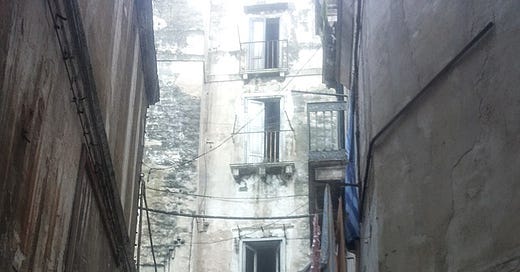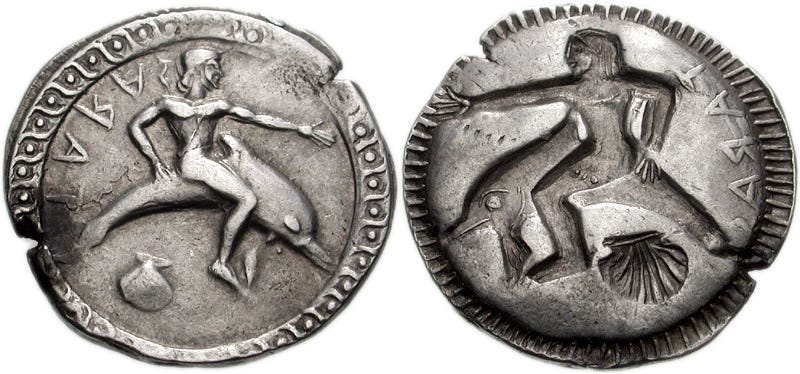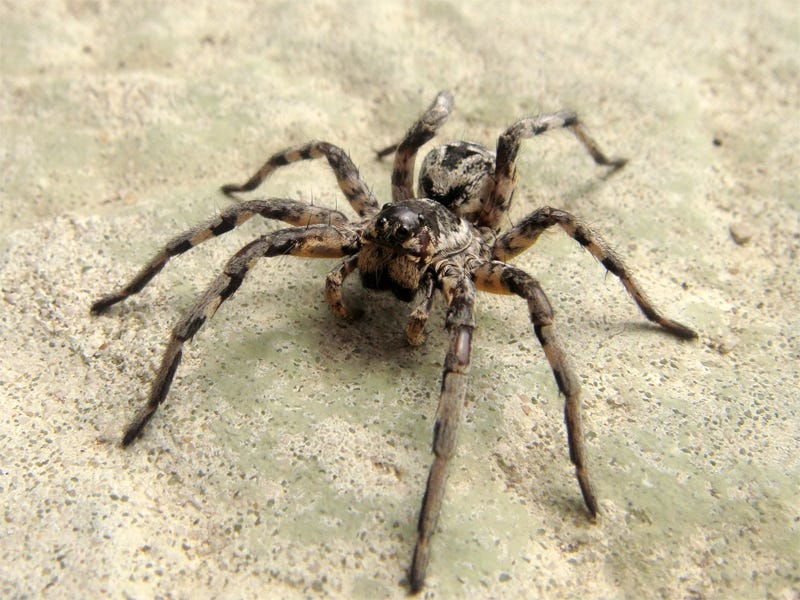I’ve visited the Italian city of Taranto twice, and was once offered a job there. I must admit it’s probably the second most depressing place I’ve ever been (Katowice in Poland takes that crown, with Peterborough being third). At the time I visited it was the second most polluted place in Europe. After Chernobyl. It’s a wonder what Italian government planning can do.
It ought to be a great city, sitting on the sea and with a heritage that goes back 27 centuries to its founding as a Spartan colony in the Italian peninsular. It has a relatively intact old town. This is not a charming or photogenic old town, more of a dark and crowded pile of buildings where you always feel seconds away from getting that authentic medieval knife in the back.
The Italian government’s attempt to help the poverty and lack of development was the giant (and frequently bankrupt) steelworks which pollutes the city, leaves a layer of iron oxide dust across everything and pushes the local rates of cancer higher.
The city takes its name from the mythological hero Taras, whose father Zeus sent a dolphin to rescue him from the sea after being shipwrecked. The city in turn gave its name to a local wolf spider, the original tarantula Lycosa tarantula. In one of those quirks of biology, it’s not actually a tarantula at all as that family’s classification post dates the Tarantine wolf spider.
Although the spider’s venom is now known not to be dangerous to humans, in Puglia in the middle ages it was believed that the bite caused a fever and hysteria. In a show of etymological logic which would please their Laconian founders, this was known as Tarantism. This resulted in the victims dancing themselves to death in a frenzied manner. Much like the “English Sweat” of Tudor England, we may never know what was really going on. A Neapolitan lawyer of the 17th century took an admirable stand for science by allowing himself to be bitten by two of the aforementioned spiders, in the presence of reputable witnesses, and surviving the ordeal without dancing himself to death.
The frenzied, twirling, dancing which the Puglian folk culture associated with Tarantism then in turn became associated with a vernacular type of dance music - logically enough called the Tarantella. This music tends to be driven by a chorus of guitars strumming chords heavily, and somewhat dominating the singer. The best examples tend to be the roughest, and I particularly enjoy this less polished one - literally “duelling guitars”
Some of the more polished ones seem to my ear to have echoes of flamenco.
And the best known of all, thanks to the Godfather soundtrack is the Tarantella Napoletana
Have a listen to a few, it’s an enjoyable diversion.





